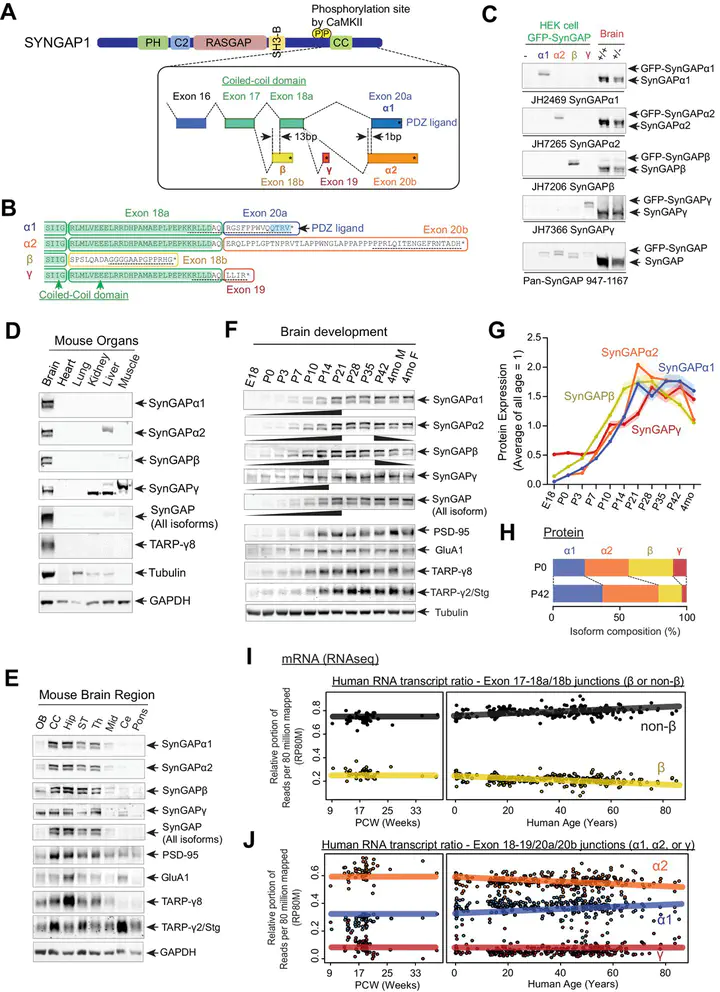SynGAP isoforms differentially regulate synaptic plasticity and dendritic development
 Image credit: eLife
Image credit: eLife
Abstract
SynGAP is a synaptic Ras GTPase-activating protein (GAP) with four C-terminal splice variants: α1, α2, β, and γ. Although studies have implicated SYNGAP1 in several cognitive disorders, it is not clear which SynGAP isoforms contribute to disease. Here, we demonstrate that SynGAP isoforms exhibit unique spatiotemporal expression patterns and play distinct roles in neuronal and synaptic development in mouse neurons. SynGAP-α1, which undergoes liquid-liquid phase separation with PSD-95, is highly enriched in synapses and is required for LTP. In contrast, SynGAP-β, which does not bind PSD-95 PDZ domains, is less synaptically targeted and promotes dendritic arborization. A mutation in SynGAP-α1 that disrupts phase separation and synaptic targeting abolishes its ability to regulate plasticity and instead causes it to drive dendritic development like SynGAP-β. These results demonstrate that distinct intrinsic biochemical properties of SynGAP isoforms determine their function, and individual isoforms may differentially contribute to the pathogenesis of SYNGAP1-related cognitive disorders.
Guess what protein is packed so densely into synapses that it looks like early X-mas? Which isoform of this protein is most critical for mental health? Our paper with @yoichi_araki @JooHeonSHIN @fellgernon @andrewejaffe @Dr_Weinberger @rhuganir is finally out! https://t.co/z41h6kfi9p
— Ingie Hong (@Ih_current) July 1, 2020